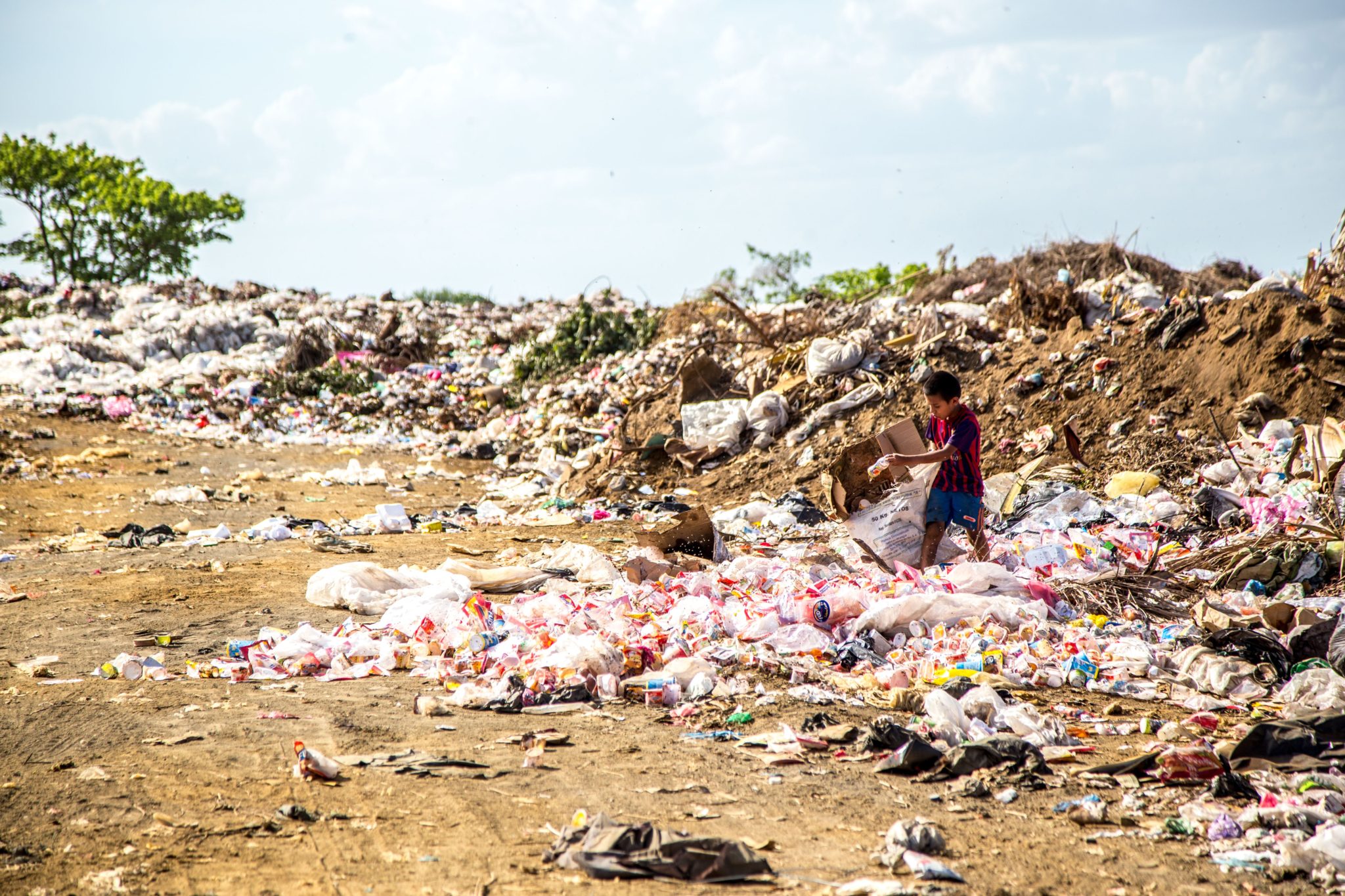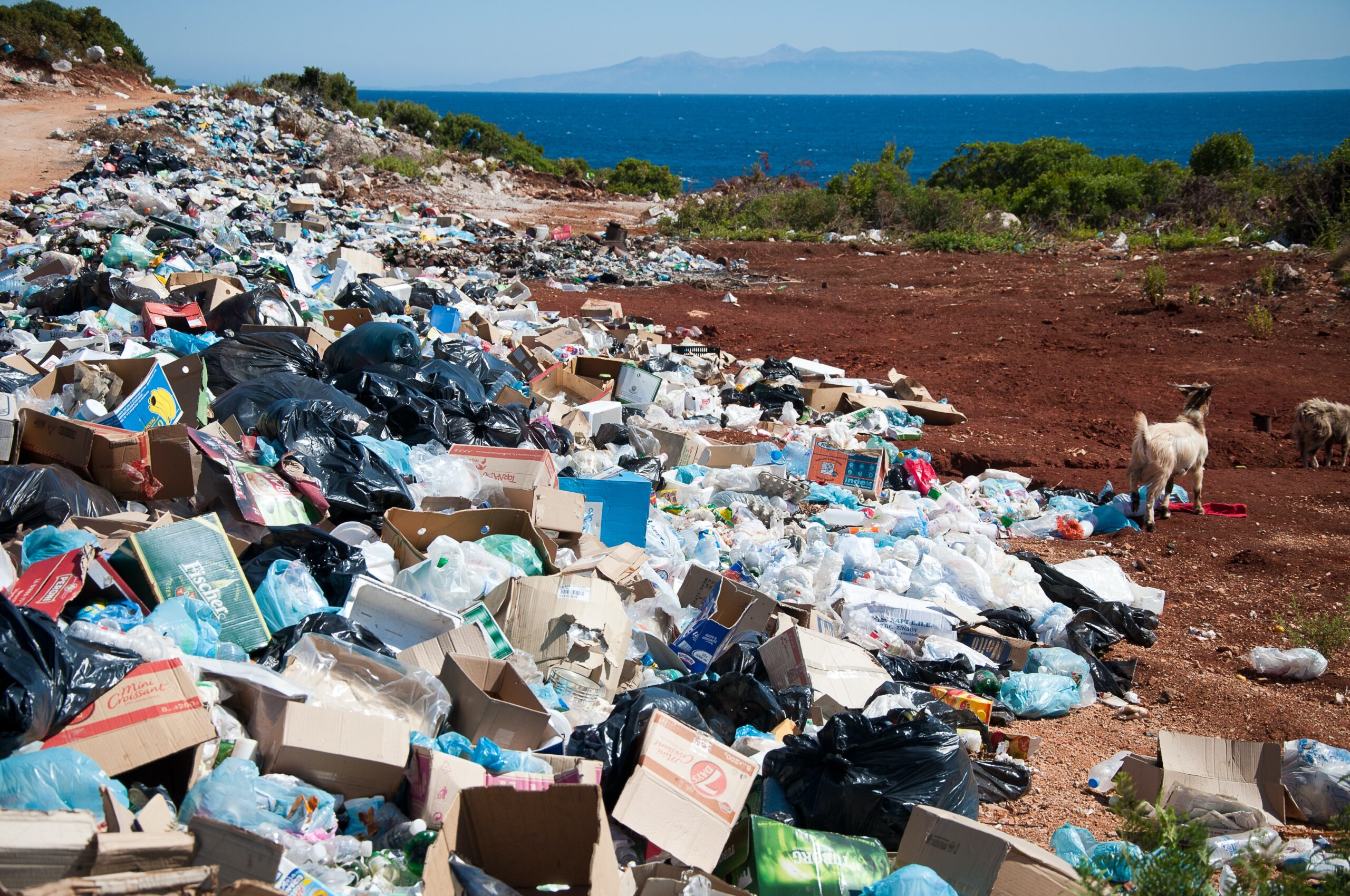For students who have never known an existence outside their G7 lifestyle, it can be tough to understand the intensity and pervasiveness of extreme worldwide poverty.
It’s mind blowing to us lucky enough to live in a wealthy country how many fellow human beings live on a just few dollars a day. As geography and global issues teachers, we love bringing the larger reality of the world to our students each day, but it’s a constant challenge to come up with the lessons that will make that impact.
It’s one thing to post on your screen that 46% of the world lives on $5.50 or less a day, it’s another to have students deeply explore visuals, first-hand accounts, and the solutions that experts are actively seeking.
In my high school Global Issues class, we spend a couple of weeks trying to understand what extreme poverty looks like in real peoples’ lives and how international NGOs are working intensely to help raise up these billions of people. Our driving question is “what is it like to live on $1 a day?” and we culminate the unit with an easy project that actually allows my students to be part of the solution! Don’t worry, I’ve included that as idea #5 below!
If you want to check out our 2-3-week unit, head over to my store for a detailed preview.
Since I love how impactful this unit is with my students, I want share with you the most powerful sources I have found to teach this sobering subject. Ones that I know will transform how my students view their lives and their place in the world, year after year.
Photo Books
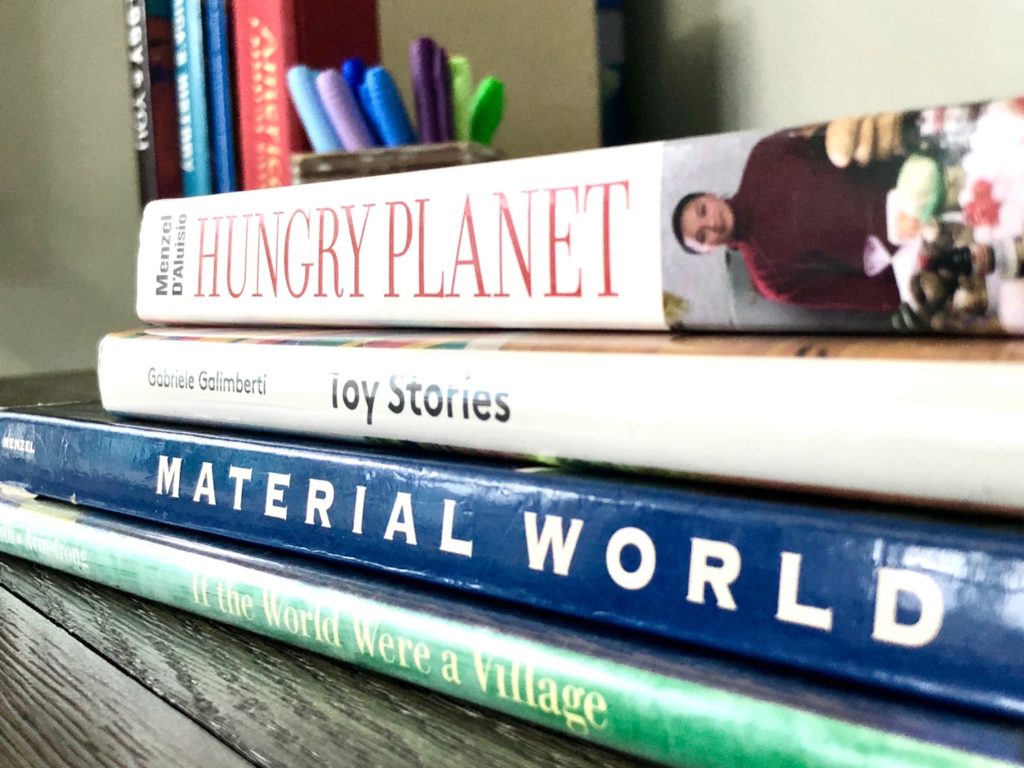
There has been a cool trend recently in documentary photography where photographers are capturing the possessions of people in a way that creates a fantastic learning opportunity ripe with wonderings, inferences, comparisons, and unexpected surprises. We spend a few days looking at the photos of Peter Menzel and Gabriele Galmiberti, who take us into the lives and homes of people around the world, providing a respectful view of the stark reality of those who live in abject poverty.
Menzel’s premise is simple but impressive: ask families to lay out their worldly possessions (Material World) or one week’s worth of food (Hungry Planet) for the camera to capture.
Galmiberti did the same with children and their toys in Toy Stories.
While there are families from wealthy countries in all three books, there are also plenty from developing and impoverished places. Those ones are especially powerful for your students to examine closely.
I have students pick a handful of families and children to analyze deeply, asking them to summarize, infer, and relate to what they see (or don’t see) using an open-ended graphic organizer.
Current Issues
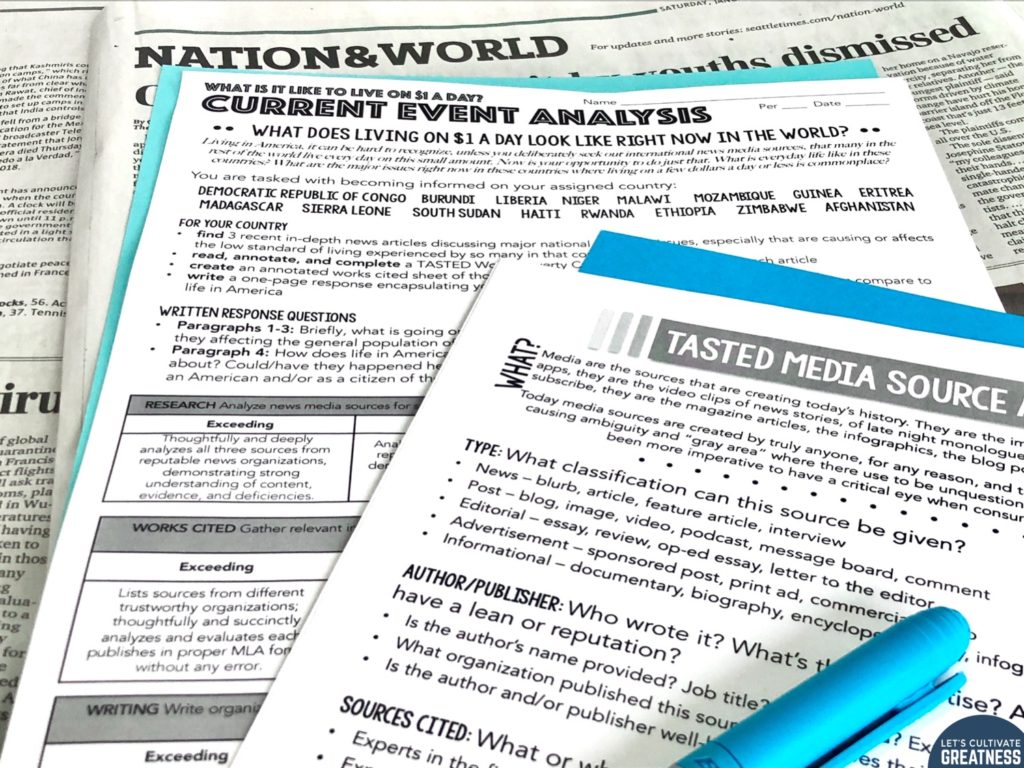
There is nothing new about incorporating recent news articles to bring life to the flatness of textbook concepts, and when talking about a topic like this it’s a no-brainer. Thanks to a variety of web tools, it’s also never been easier to integrate them into a variety of activities, even when your students have a range of reading levels.
Newsela is widely-known and loved for its leveled news articles, but there are other tools out there like Insert Learning, a Chrome extension to embed all sorts of things like questions and videos within web sources as part of a Google Classroom activity, or Blend Space, which allows you to create a curated collection of different sources and attach discussion threads and quizzes to them. I also really like Print Friendly for ad-free hardcopy printing and annotating of any online news article if you want or need to keep it low-tech.
If you have middle schoolers or lower-level readers, you could provide students with articles about extreme poverty from select countries, either in an in-class jigsaw-style group share, or in an article of the week read and written reflection format. Check out this blog post where I detail my best tips for weaving news articles into your social studies classroom.
With my high schoolers, I assign each of my students a country from a list of the world’s poorest and, over the course of our unit on extreme poverty, they have to find three news stories from their country, annotate them, then complete a short write-up analysis and reflection with a formal works cited sheet.
I have students use news organizations like The New York Times, BBC World News, The Economist, and Al Jazeera and we start with a mini lesson on navigating a news website.
We use my TASTED analysis strategy, which is built specifically for news media sources. You can download your own FREE copy now, along with other must-have source analysis handouts!
Documentary
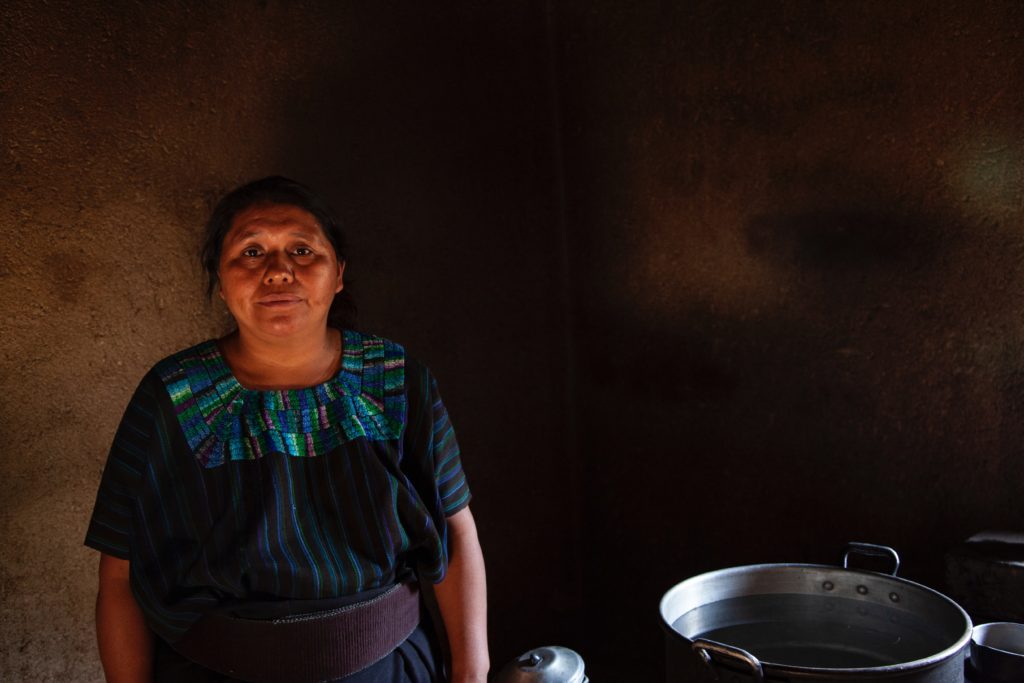
No unit on world poverty is complete without the film Living on One Dollar. If you haven’t watched it, I can’t recommend it enough. You can easily find it online and it’s usually available for free to stream somewhere.
It’s a self-made documentary of four college students wanting to expand on what they learned in their lecture halls by spending a summer in Peña Blanca, a rural village in the mountains of Guatemala, where the average income is about a dollar a day. They document trying to live on this bare bones income themselves for a summer and interview members of the community about their lives.
Your students will be touched by Chino, the pre-teen whose education has already been replaced by working in the fields, and Rosa, the young woman who starts a business in order to raise money to go back and finish high school. It will absolutely give your students a better perspective on the educational opportunities they have in their lives.
The film is just under an hour and engaging for both middle and high school students.
If you’re like me and always searching for great films to show, you’ll want to read my list of my favorite global issues documentaries, which (of course!) includes this one.
Interactive Digital Graphs

The World in Data, created by the University of Oxford’s Martin Programme of Global Development, is a fantastic database of over 3,000 beautiful charts and maps, many interactive, on nearly 300 topics. Every standard of living measurement imaginable is included and compared across the nations of the world, from life expectancies to internet access. And they are displayed in easy-to-understand color graphics that are perfect for middle and high school students to explore.
They make great material for a general lesson on how to read a graph source, but are specifically useful for a study of wealth and poverty across the globe. You can download each graph or map as an image file to insert into worksheets or presentation files, or you can have students head over to the website themselves by assigning each a certain graph or collection of graphs to independently examine and teach to the rest of the class.
This website is an absolute goldmine for teachers.
Micro-Loaning
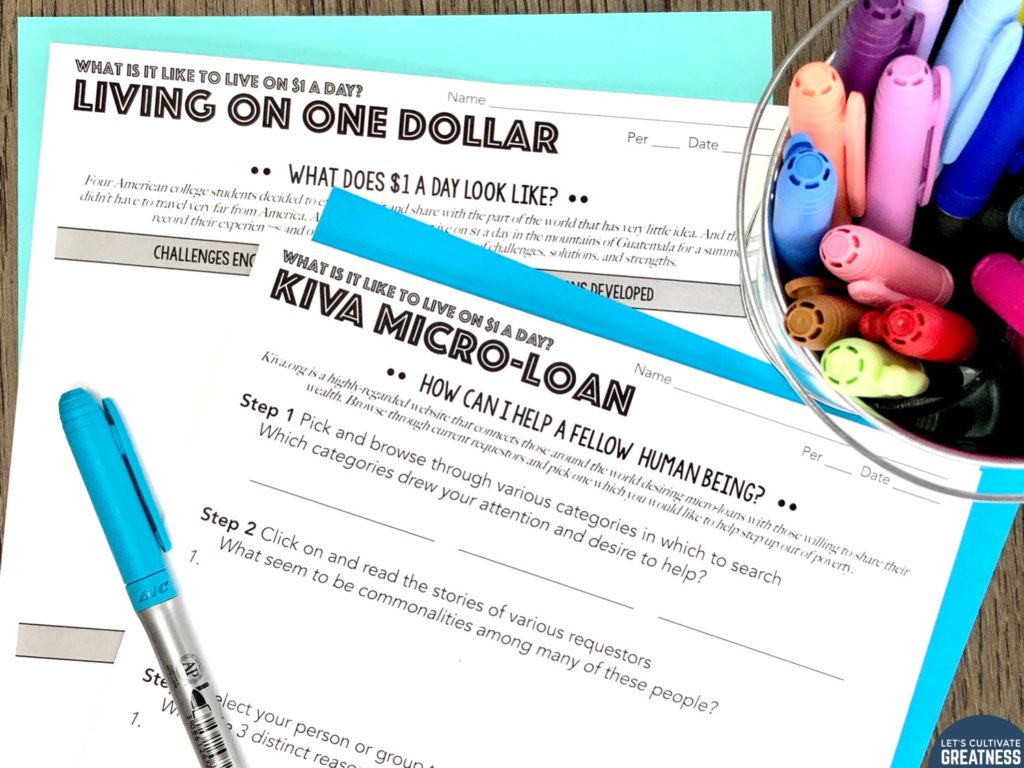
One solution to the massive problem of world poverty is actually quite simple. It’s called micro-loaning and is promoted as a doable solution by Zach and Chris in their film, Living on One Dollar, making this the perfect complement activity after viewing it.
Micro-loaning allows impoverished people who aren’t able to obtain more formal bank loans to acquire small (to us!) amounts of money to start or grow their businesses and climb out of their subsistent existence.
Like Rosa, who, as students saw in the film, used a micro-loan to buy a hand weaving tool to start creating traditional Mayan woven cloth to sell. Rosa, by the way, has now graduated secondary school and nursing school, with the help of Zach and Chris. Their follow-up short film, Rosa – These Storms, is free to stream and perfect to show your students the impact these small loans can have. It’s just over 10 minutes.
I give students a tour of the micro-loaning nonprofit website, Kiva, where people like you and me can serve to fund these loans with as little as $25. See if your school, PTSA, or a local service organization like Rotary will provide the funds for the loan. Have students browse, choose, and nominate a person or group they would like to fund. Then have the class vote. Warning though, this is a very popular site and requests get funded very quickly so definitely submit your loans immediately after students pick, because often by the next day they have been fully funded.
When funds are repaid, you will have a balance that can be re-loaned, so one initial amount of money will sustain this project year after year, especially if you have students select borrowers with 1-year or shorter loan lengths.
Out of all the projects we do across all my PBL curriculums, this is the easiest and perhaps the most real-world one we do, serving as a great lesson that creating real positive impact in the world doesn’t always have to be a laborious process.
I hope these doable lesson ideas help you make the issue of world poverty more real for your students!
If you want to grab a complete PBL unit kit that includes all these ideas and more, click below!
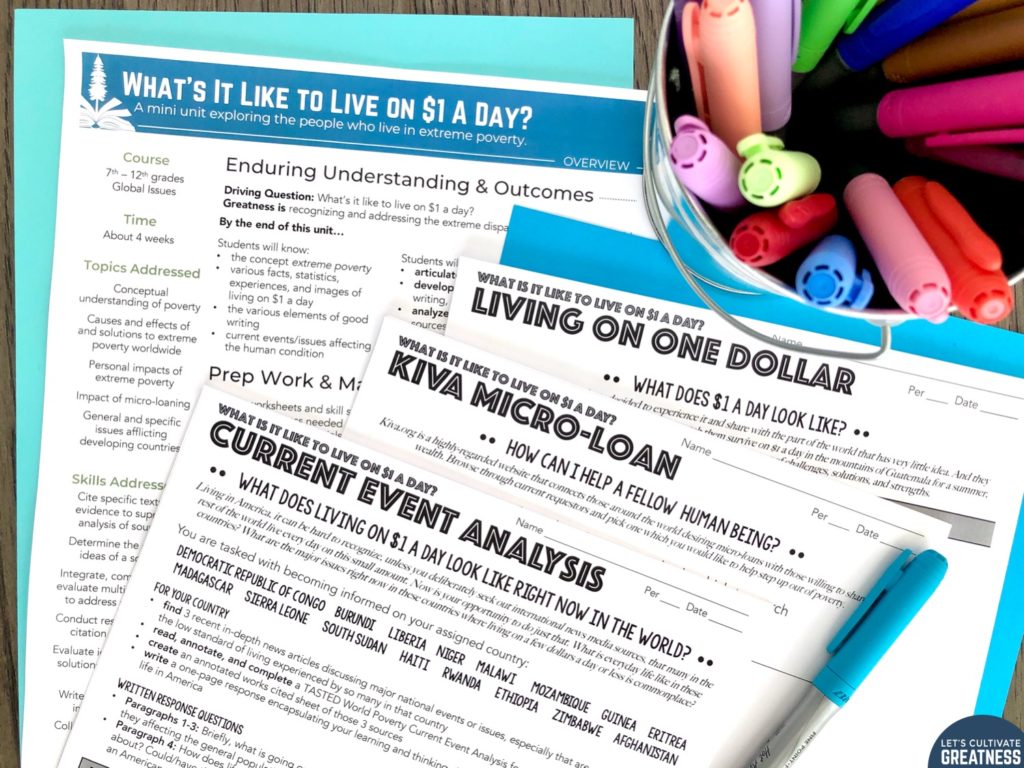
Image photo credits: Hermes Rivera, The World in Data, Lara Natalia


